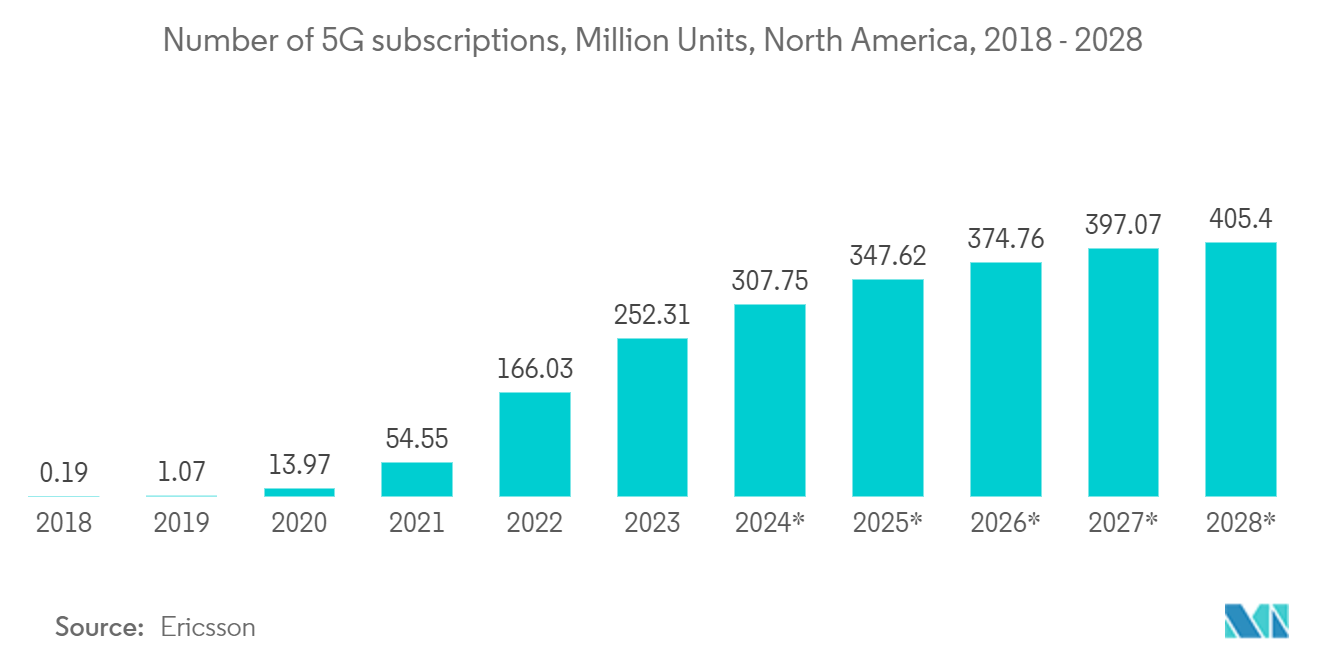Market Trends of United States Data Center Networking Industry
Ethernet Switches is Anticipated to be the Largest Segment
- An Ethernet switch represents fundamental networking hardware that serves as the backbone of networks and the Internet. These switches connect wired devices like computers, Wi-Fi access points, PoE lighting, IoT devices, and servers onto an Ethernet LAN, facilitating communication between these devices and access to the Internet.
- Ethernet switches find extensive applications in industrial infrastructure, including smart grid management, security and surveillance systems, intelligent rail and transportation networks, and other utilities that drive the industrial Ethernet switch market. In smart grids, Ethernet switches play a pivotal role in substation automation, significantly reducing the effort and complexity of cabling among various power transmission and distribution substation devices by integrating them into Ethernet-based networks.
- In November 2022, Siemens renewed and enhanced its Scalance XC/XR-300 series of industrial Ethernet switches, introducing additional features tailored for next-generation industrial networks. These managed layer 2 switches from the Scalance X Industrial Ethernet Switch product family are available in compact and 19-inch versions suitable for control cabinets.
- The range of industrial Ethernet switch products available showcases the vendor's ongoing product expansion, moving beyond traditional 8-port DIN rail switches to offer application-specific services. Vertical integration and infrastructure applications prioritize maximum throughput and bandwidth, while in factory automation, the focus may be on limiting network traffic.
- Utilizing Power-over-Ethernet (PoE) technology, smart Ethernet switches play a critical role in security and monitoring. PoE networks deliver power through local network cables to connected devices, proving particularly useful for Internet protocol-based monitoring systems, facilitating accessible browser-based communication and user interfaces.

IT & Telecommunication is Anticipated to be the Fastest Growing Segment
- The United States holds the position as the world's largest technology market. Information and communication technology (ICT) is omnipresent and plays a pivotal role in the country's economic development. It's estimated that the US's ICT market accounted for approximately 35% of the world's market in 2022. Since the Industrial Revolution following World War II, innovation has remained a defining characteristic of America's competitiveness, propelling its global dominance.
- Over the past decade, the number of cloud vendors and hyperscalers has significantly increased, positioning them as leading energy consumers. Global data centers collectively consume an amount of energy equivalent to 20% of the total commercial electricity consumption in the United States, which stood at 987 TWh. While energy consumption through traditional data centers has seen a decline for three consecutive years, hyperscale energy consumption has surged due to their rapid expansion and substantial sizes.
- The US computer, information technology, and communications industry have a reputation for developing reliable, efficient products and swiftly introducing them to the market. The strict enforcement of intellectual property regulations in the US market has attracted the attention of numerous international companies. Notably, the software and technology services sector accounts for over half of the country's technology market spending. US companies maintain dominant positions in the global market for both packaged and individual software and remain competitive across all other market segments.
- Regarding research and development, in 2022, the Federal Communications Commission (FCC) granted the first Spectrum Horizons License, a special 10-year authorization category for experimenting with frequencies ranging between 95 GHz and 3 THz. Additionally, it has established an expert group to advise the board on conducting spectrum work for 6G. Under the Biden administration, the signing of memorandums of understanding (MOUs) with countries like Japan is part of a plan to invest USD 4.5 billion in 6G development. Such initiatives are anticipated to lead to substantial data traffic in the forthcoming years, thereby driving colocation demand.


